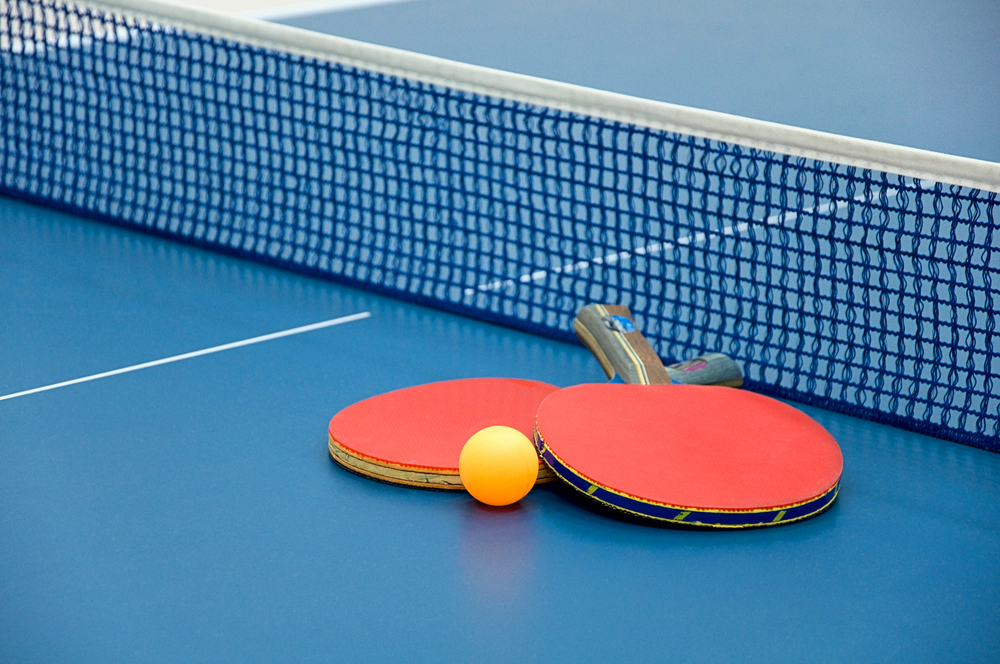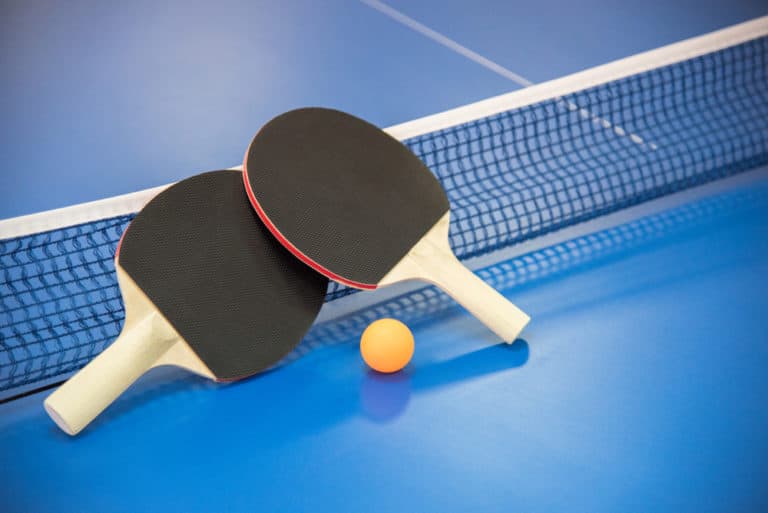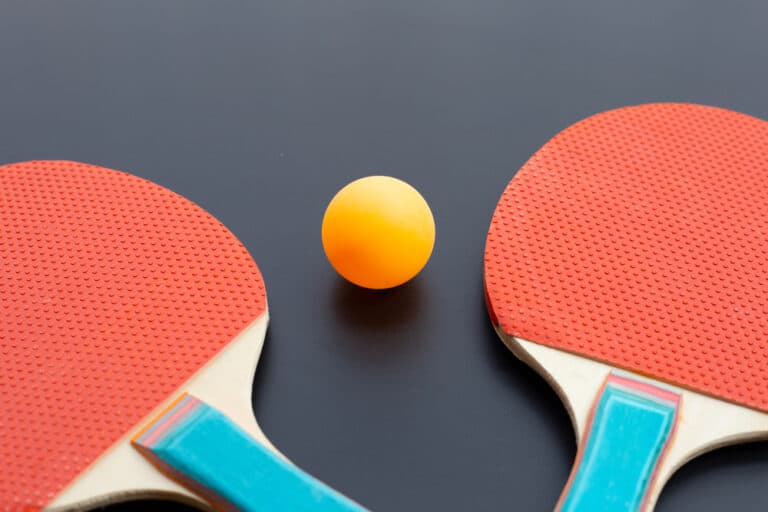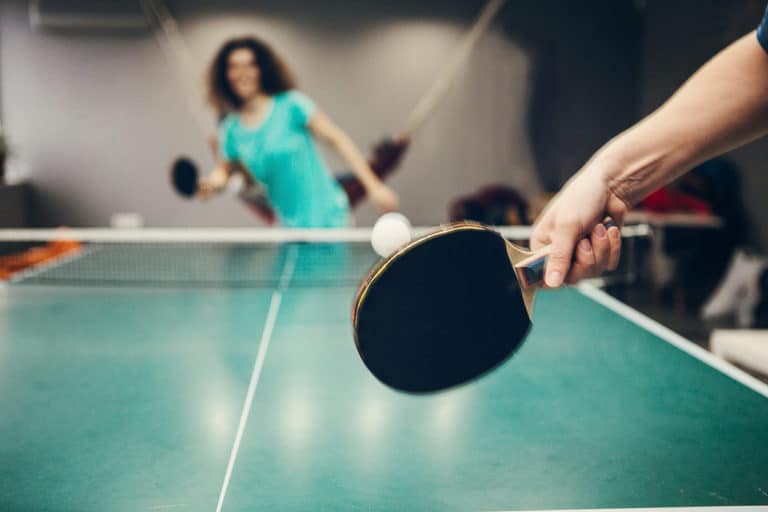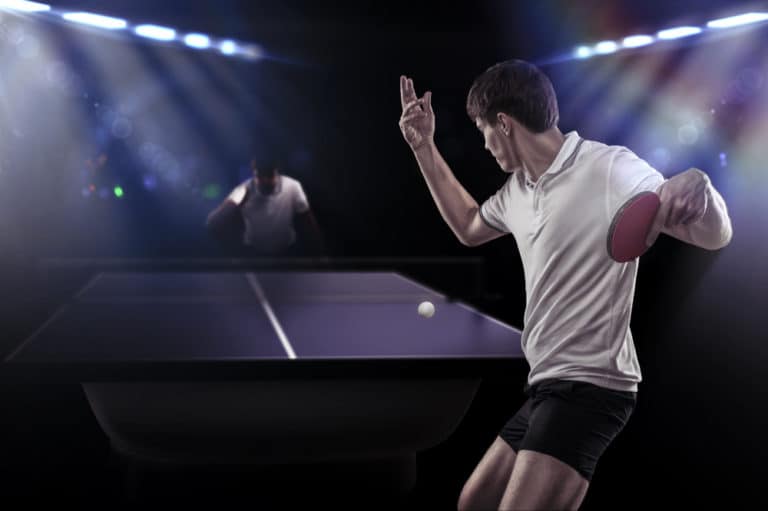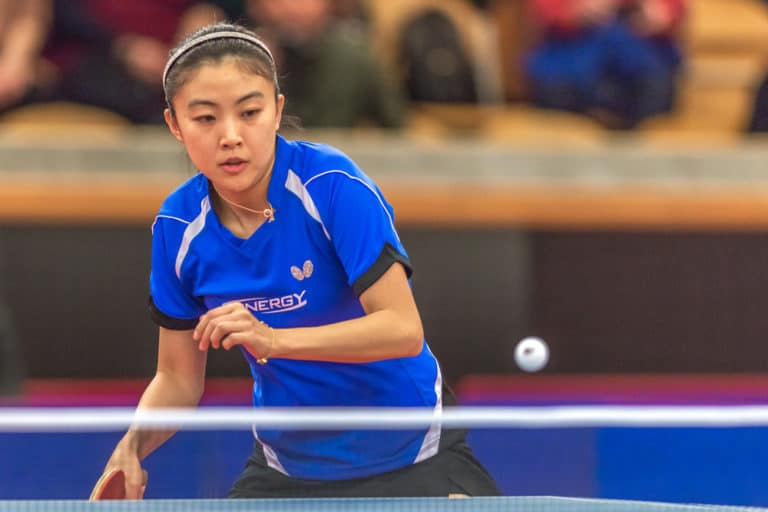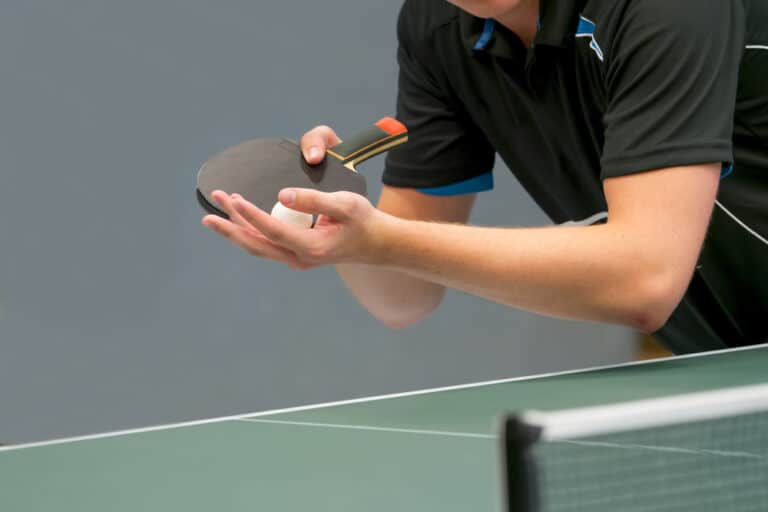How Do I Make My Table Tennis Rubber More Grippy?
As you improve at table tennis, you will start noticing subtle factors in your performance. When players go through their first slump, figuring out what is happening can be tricky. One of the most significant, but least talked about factors that affect performance is your equipment. So, how do you make your table tennis bat more grippy?
- Clean your table tennis bat
- Let it dry out
- Apply rubber booster or olive oil
- If the rubber seems too damaged, buy a new one.
- Test the rubber by holding the bat horizontally. Then place the ball on the bat and see how much the ball rolls.
Keeping your rubber as grippy as possible is crucial for maximizing your performance. But, at the same time, you do not want to damage your paddle. So, I will walk you through making your rubber more grippy without damaging your paddle. Let’s get into it.
How To Add Grip To Your Table Tennis Bat: 7 Easy Steps
The tips in this section should be used as a guideline. It is important to remember that you follow the instructions and precautions on your equipment packaging. With that said, Let’s get into it.
Clean The Rubber
To clean the rubber of your bat, you want to avoid using any harsh chemicals. The last thing you, or any table tennis player wants is for the rubber to start degrading and, more importantly, for the adhesive to wear off. That said, you will need a soft sponge or cloth, warm water, and a mild detergent (I prefer using a dedicated table tennis paddle cleaner.)
Apply a small amount of table tennis rubber cleaner to a clean cloth and gently rub the rubber surface. Doing this will help remove any built-up dirt and grime, as well as any old layers of glue or other contaminants that may be affecting the rubber grip.
My favorite way to clean my table tennis rubber is to use Killerspin Ping Pong Paddle Rubber Cleaner (Available on Amazon). The solution works well, and you will not have to mess around making your own solution that might be harmful to your bat.
Many people like to rinse their paddles after cleaning them. However, I am not a fan of doing this. Instead, I like to wipe any excess soap away with a damp cloth. In addition, the idea of submerging my paddle in water is not very appealing.
Let The Rubber Dry
Giving your paddle time to dry out is crucial, as you will not have a good time with the other steps if it is not dry. That said, there are three things that you need to avoid:
- Do not rub the bat with a towel; gently pat it.
- Avoid letting the bat dry in the sun. It might be quicker, but the sun can damage your paddle.
- Never use a hairdryer on your bat; it will almost certainly ruin the adhesive on the paddle.
The best way to dry your paddle is to pat it down with a dry towel or cloth and place the bat in the shade outside for 5 to 20 minutes. You can speed things up by placing the bat in front of a fan. Please ensure that it dries completely before proceeding to the next step.
Apply Rubber Booster
There are many different things you can use to boost your rubber. For example, you can use olive oil if you do not want to spend money on a booster. However, my favorite table tennis rubber booster is the Butterfly Table Tennis Racket Care Kit (Available on Amazon).
I have also heard of people using a very thin layer of water-based glue. However, I do not recommend this unless you have tried using a booster first, and it does not work. I don’t think I will be trying it anytime soon.
When applying the rubber booster, you want to cover the rubber surface evenly. It is also a great idea to use a soft brush or sponge and to gently apply the booster; you don’t want to cause unnecessary strain to the rubber and accidentally pull it off.
The final thing to note is using a rubber booster has stirred some controversy in the table tennis community. Some people don’t like it and say it gives a competitive edge that shouldn’t be there; however, I don’t see a problem with using it.
Allow the booster to dry
If you are using something like olive oil, it is advisable to let your rubber dry overnight. Typically I like to pat the paddle to remove excess chemicals lightly; once I’ve done that, I let it sit to dry for around 8 to 12 hours or overnight.
If you use a commercial booster like the one I have listed above, you only need to let it dry for approximately 15 to 20 minutes. But, again, I’m assuming that you did not drench your paddle in the chemicals but instead just lightly brushed it on.
Buff the rubber surface
Once the booster is dry, use a clean cloth to buff to remove any excess booster gently.
Buy A New Rubber
All table tennis equipment has a lifespan, and while you can prolong it, you will need to replace it once the equipment is too damaged. So, if you have tried the steps above and nothing seems to be working, you might have to get a new rubber, but that is still better than buying a new paddle.
First, consider the type of play you’ll use it for. Different types of rubbers are available, each with its unique characteristics. For example, if you’re a defensive player, you might want to use a rubber with a softer sponge for better control. But if you’re an offensive player, you might want to use a rubber with a harder sponge for more power.
Another thing to consider is the brand and the price. Some fantastic brands, like Butterfly, Yasaka, and DHS, are known for producing high-quality rubbers suitable for players of all skill levels.
One of my favorite 3rd party rubbers is the DHS NEO Hurricane 3. The rubber is often better than the one you find on your paddle. One thing that surprised me was that each package contained only one rubber, so I had to order more. That said, the rubber stays grippy for a long time; order two to do both sides of your paddle.
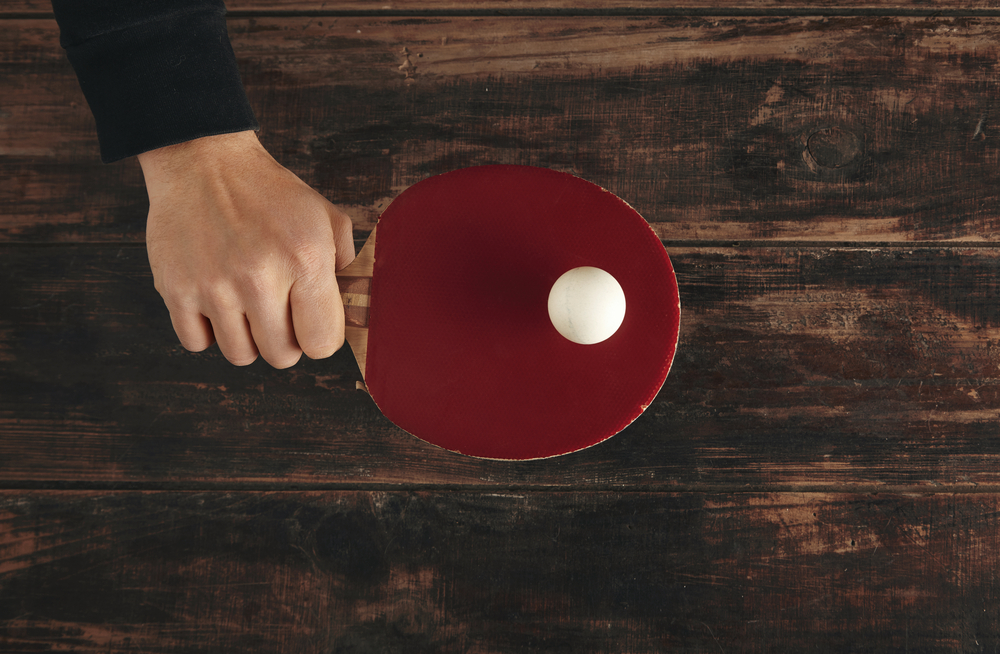
What Kind Of Glue To Use On Table Tennis Rubber?
Whether you are applying a new rubber to your paddle or using the glue for some other reason, it is always essential to use water-based glue. Let me explain.
Water-based glues are not the hardest to get off the bat, which is a significant time saver in the future. However, water-based glue doesn’t have as many chemicals as other types, and as I’ve mentioned before, one thing that can damage the rubber on your table tennis paddle is chemicals.
Another crucial tip is never to use too much glue. If you are replacing the rubber on your paddle with one that has more grip, be sure to apply a very thin layer to the paddle, and the rubber, if it is too thick, you are changing the dynamics of your paddle.
Should A Table Tennis Bat’s Rubber Be Sticky?
So far, this has been a lengthy article discussing how to keep or add as much grip to your table tennis paddle as possible. So, it is time to answer the question, should your paddle be sticky at all? Well, let’s take a look.
Sticky rubber on a table tennis bat can provide several benefits, including:
- Increased spin: The sticky surface of the rubber allows for more friction between the ball and the bat, which can result in more spin on shots. This can make executing spin-based shots such as topspin and backspin easier.
- Better control: The increased friction provided by a sticky rubber can also improve the player’s ability to control the ball. This can lead to more accurate shots and better ball placement.
- Greater power: Sticky rubber can also help generate more power on shots by allowing the player to generate more force in their swings.
- Improved blocking: A sticky rubber makes generating spin on the ball easier when blocking, allowing for better control and more effective blocks.
- More versatility: A sticky rubber can be suitable for both offensive and defensive players and make it easier to execute various shots.
It’s worth noting that sticky rubbers can be less durable than others; they tend to wear out faster, are harder to clean, and may not be the best choice for beginners or players with less developed techniques.
When Should You Replace Your Table Tennis Bat’s Rubber?
When it comes to replacing the rubber on your table tennis bat, it depends on how often you are playing and how well you are taking care of it.
If you are a casual player, you can probably go a year or more before needing a new rubber. But if you’re serious about the game and playing a lot, you might need to change it every few months. And if you notice the rubber starting to look all funky, like it’s cracking or peeling, it’s probably time for a replacement ASAP.
How To Maintain Your Table Tennis Bat
Table tennis bat maintenance is vital in ensuring that your bat stays in good condition and performs well during gameplay. Here’s how to properly maintain your table tennis bat:
- Clean your bat after each use by wiping down the blade and handle with a damp cloth to remove dirt and sweat.
- Store your bat in a cool, dry place, away from direct sunlight and extreme temperatures. Avoid storing it in a humid area or in a case that doesn’t allow for proper ventilation.
- Protect your bat from damage by avoiding hitting it against hard surfaces or dropping it.
- Inspect the rubber regularly for signs of wear or damage, such as cracking or peeling, and replace it if necessary.
- Apply a protective film on the rubber surface to protect it from dust, debris, and other environmental factors.
- Clean the rubber surface with a rubber cleaner to maintain its tackiness and grip.
- Keep an eye on the bat’s overall condition and consider getting a new one if it shows signs of wear or damage.
By following these steps, you can prolong the lifespan of your table tennis bat and ensure that it performs at its best during gameplay.
Should You Buy A New Table Tennis Bat?
Regarding table tennis paddles, there are several points to consider when you are in the market to buy a new one or fix your own. Here are some of my pros and cons of each option:
Pros of buying a new paddle:
- You’ll get a paddle made with the latest materials and technologies, which can help you play better and last longer.
- When you buy a new paddle, you know exactly what you’re getting in weight, balance, and surface texture so that you can play more consistently.
- Many new paddles come with a warranty, so you can have peace of mind knowing that you’re protected against defects or issues that may arise.
- You can start playing immediately without spending time and energy on repairs or modifications.
- A new paddle will look professional and be an excellent addition to your collection.
Cons of buying a new paddle:
- New paddles can be expensive, especially high-end models.
- If something goes wrong with the paddle, you may be unable to fix it yourself.
All in all, it’s a matter of personal preference and budget. A new paddle may be the way to go if you’re looking for the latest technology. On the other hand, fixing your own paddle may be a more affordable option if you’re on a budget. Either way, you’ll enjoy your table tennis game in no time!
Conclusion
Adding grip to your paddle may seem tedious, but it is relatively simple. I hope you found all the information you were looking for in this article. If you have any further questions or want to learn more, check out some of my other articles. Thank you for reading!

